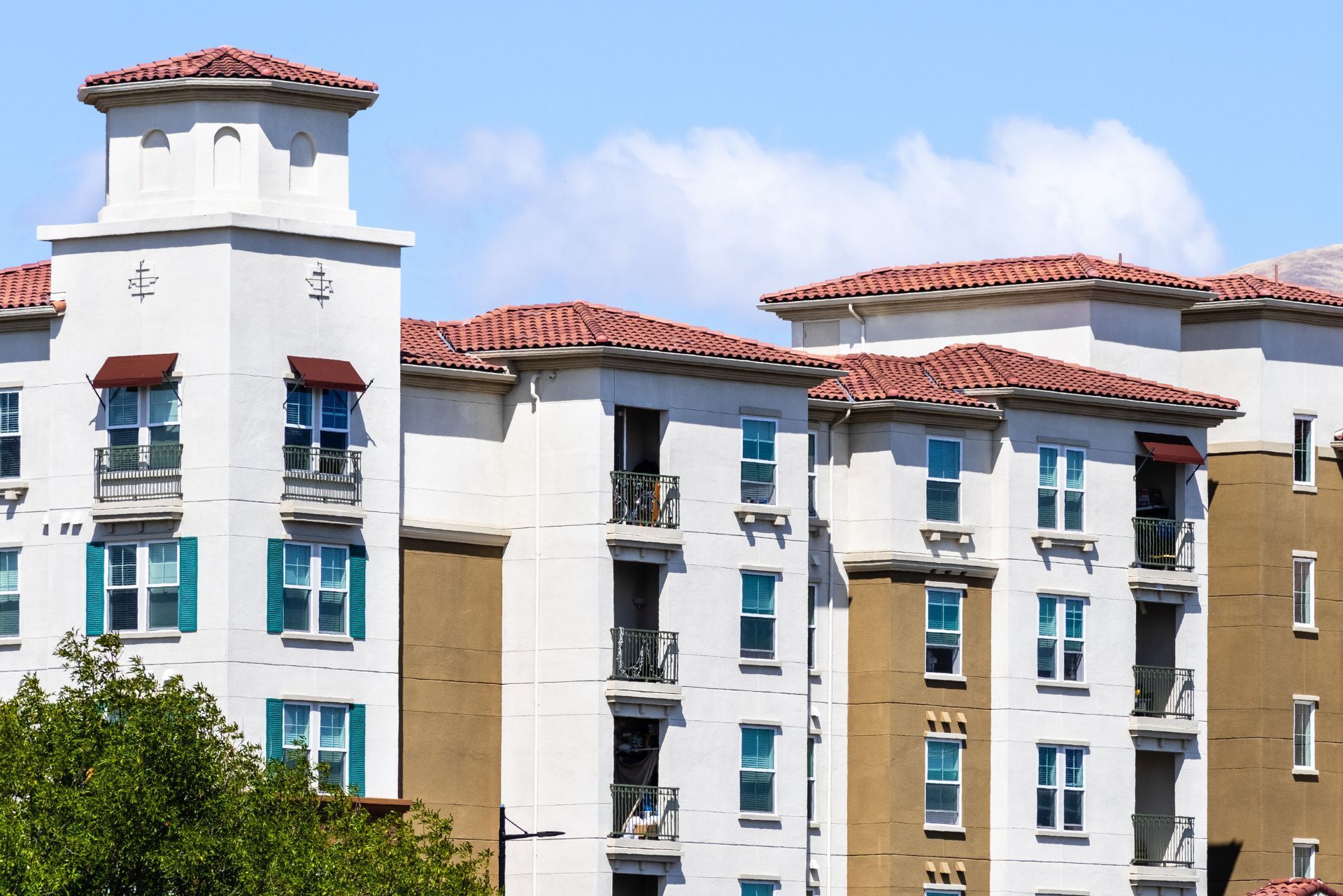Top 3 Recommended Policies

Investing in multifamily properties in Florida can be a lucrative venture, but it also comes with its own set of risks. Understanding the insurance landscape for these properties is crucial for both investors and property managers. This comprehensive guide will delve into the essentials of Florida multifamily properties insurance, covering everything from policy types to claims processes, ensuring that you are well-equipped to protect your investment.
Understanding Multifamily Properties
Before diving into insurance specifics, it’s important to clarify what constitutes a multifamily property. Generally, these are residential buildings designed to house multiple families, such as apartment complexes, duplexes, and triplexes. The unique characteristics of multifamily properties necessitate specialized insurance coverage.
Types of Multifamily Properties
In Florida, multifamily properties can range from small duplexes to large apartment buildings. Each type presents its own challenges and risks. For instance, a small duplex may have fewer tenants and lower risk, while a large apartment complex may face higher liability due to the number of residents and common areas.
Understanding the type of multifamily property you own or are considering purchasing will help you tailor your insurance needs effectively. For example, a high-rise apartment may require additional coverage for elevators and common areas, while a smaller building might focus more on tenant-related liabilities. Additionally, the age and condition of the property can significantly influence insurance requirements; older buildings may need more comprehensive coverage due to outdated electrical systems or plumbing that could pose safety hazards.
Why Insurance is Essential
Insurance serves as a safety net for property owners. In Florida, where natural disasters like hurricanes can occur, having the right insurance is not just a good idea; it’s essential. Multifamily properties are particularly vulnerable to risks such as fire, theft, and natural disasters, making comprehensive coverage vital to safeguard both the property and its tenants.
Moreover, the presence of multiple tenants introduces additional complexities in risk management. For example, if one tenant causes damage to the property or injures themselves in a common area, the property owner could be held liable. This potential for liability underscores the importance of having adequate liability insurance to protect against lawsuits and claims. Furthermore, multifamily properties often have amenities such as pools, gyms, and recreational areas that can increase the risk of accidents, making it crucial for owners to ensure these areas are well-maintained and adequately insured to mitigate potential liabilities.

Types of Insurance Coverage for Multifamily Properties
When it comes to insuring multifamily properties in Florida, there are several types of coverage to consider. Each type addresses different risks and liabilities associated with property ownership and management.
Property Insurance
Property insurance is fundamental for any multifamily property owner. This type of insurance covers physical damage to the building caused by events such as fire, vandalism, or severe weather. In Florida, where hurricanes are a significant concern, it’s crucial to ensure that your property insurance includes coverage for wind and flood damage.
Many property owners opt for a replacement cost policy, which covers the cost of repairing or replacing damaged property without depreciation. This can be particularly beneficial in the event of a total loss, ensuring that you can rebuild without incurring substantial out-of-pocket expenses. Additionally, some policies may offer extended replacement cost coverage, which goes beyond the policy limit to cover the full cost of rebuilding, especially in areas where construction costs may have risen significantly after a disaster.
Liability Insurance
Liability insurance protects property owners from claims arising from injuries or damages that occur on the property. For multifamily properties, this is especially important due to the number of tenants and visitors that may frequent the premises.
Common liability claims can include slip-and-fall accidents in common areas, dog bites from tenants’ pets, or injuries resulting from inadequate maintenance. Liability insurance helps cover legal fees, medical expenses, and any settlements or judgments that may arise from such claims. Furthermore, some policies may include coverage for personal injury claims, which can protect against allegations of defamation, invasion of privacy, or wrongful eviction, providing a broader safety net for property owners.
Loss of Income Insurance
Loss of income insurance, also known as business interruption insurance, can provide financial protection if a property becomes uninhabitable due to a covered loss. For instance, if a fire damages a multifamily building, this insurance can help replace lost rental income while repairs are being made.
This type of coverage is particularly valuable for multifamily property owners, as it helps maintain cash flow during challenging times, ensuring that mortgage payments and other expenses can still be met. Additionally, some policies may offer coverage for extra expenses incurred during the recovery period, such as temporary housing for displaced tenants or increased operating costs, which can further alleviate the financial strain on property owners during such crises. Understanding the specific terms and conditions of these policies is essential to ensure adequate protection and peace of mind in the face of unforeseen events.
Factors Affecting Insurance Premiums
Several factors can influence the cost of insurance premiums for multifamily properties in Florida. Understanding these factors can help property owners make informed decisions when selecting coverage.
Location
The location of a multifamily property plays a significant role in determining insurance premiums. Properties situated in areas prone to natural disasters, such as hurricanes or flooding, may face higher premiums due to the increased risk. Additionally, urban properties may be at a higher risk for theft and vandalism, impacting insurance costs. Furthermore, proximity to emergency services, such as fire stations and police departments, can also affect premiums; properties located near these services may benefit from lower rates due to quicker response times in emergencies.
Building Age and Condition
The age and condition of a multifamily property can also affect insurance rates. Older buildings may require more maintenance and repairs, which can increase the likelihood of claims. Insurers may charge higher premiums for properties that do not meet modern safety standards or building codes. Properties that have undergone recent renovations or have been updated with modern materials and technologies may be eligible for discounts, as they are typically seen as less risky. Additionally, features such as updated electrical systems, plumbing, and roofing can further enhance the property's safety profile, potentially lowering insurance costs.
Regular maintenance and updates can mitigate some of these risks, potentially leading to lower insurance costs over time. Property owners should consider investing in renovations and upgrades to improve the overall condition of their buildings. Implementing preventive measures, such as regular inspections and maintenance schedules, can not only prolong the life of the property but also demonstrate to insurers a commitment to risk management, which may result in more favorable premium rates.
Claims History
A property’s claims history can significantly impact insurance premiums. If a property has a history of frequent claims, insurers may view it as a higher risk and increase premiums accordingly. Property owners should strive to maintain their properties and address issues promptly to minimize the likelihood of claims. Additionally, establishing a proactive approach to risk management, such as installing security systems or engaging in community safety programs, can help reduce the chances of incidents that lead to claims.
Moreover, property owners can benefit from understanding the types of claims that have historically affected their specific area. For instance, if water damage claims are prevalent in a region, investing in flood prevention measures or water leak detection systems can not only protect the property but also potentially lower insurance costs. By being informed and taking strategic actions, property owners can significantly influence their insurance premiums over time.
Choosing the Right Insurance Provider
Selecting the right insurance provider is crucial for multifamily property owners. The right insurer will not only offer comprehensive coverage but also provide excellent customer service and support during the claims process. This relationship can be pivotal, especially when navigating the complexities of property management and the unique risks associated with multifamily units.
Researching Insurance Companies
When searching for an insurance provider, it’s essential to conduct thorough research. Look for companies with a strong reputation in the industry and positive customer reviews. Online resources, such as forums and review websites, can provide valuable insights into the experiences of other property owners. Additionally, consider checking with state insurance regulators to ensure that the companies you’re considering are licensed and in good standing.
Furthermore, it can be beneficial to explore the financial stability of potential insurers. Organizations like A.M. Best or Standard & Poor’s provide ratings that reflect an insurer's ability to meet its ongoing insurance obligations. A financially sound company is more likely to handle claims efficiently and effectively, giving you peace of mind as a property owner.
Additionally, consider reaching out to local real estate investment groups or property management associations for recommendations on reputable insurance providers in Florida. Networking with other professionals in the field can yield insights that are not readily available online, and personal experiences can often highlight the strengths and weaknesses of various insurers.
Understanding Policy Terms
Before committing to an insurance policy, it’s vital to understand the terms and conditions. Pay close attention to coverage limits, deductibles, and any exclusions that may apply. Some policies may have specific limitations regarding natural disasters, so it’s essential to clarify these details with the insurer. Understanding the nuances of liability coverage, property damage, and loss of rental income can help ensure that you are adequately protected against potential financial setbacks.
Don’t hesitate to ask questions or request clarifications on any aspects of the policy that may be unclear. A reputable insurance agent will be more than willing to provide the information needed to make an informed decision. Additionally, it may be helpful to compare multiple quotes side by side, as this can reveal differences in coverage options and pricing that may not be immediately apparent. Engaging in this process can empower you to negotiate better terms and ensure that you select a policy that aligns with your specific needs and risk profile.
Common Exclusions in Multifamily Property Insurance
While multifamily property insurance can provide extensive coverage, it’s essential to be aware of common exclusions that may apply. Understanding these exclusions can help property owners take additional precautions to protect their investments.
Flood Damage
In many cases, standard property insurance policies do not cover flood damage. Given Florida’s susceptibility to flooding, particularly during hurricane season, property owners may need to purchase separate flood insurance through the National Flood Insurance Program (NFIP) or a private insurer.
It’s crucial to assess the flood risk of a property and consider obtaining flood insurance to ensure comprehensive protection against potential losses. Additionally, property owners should invest in flood mitigation strategies, such as elevating structures, installing flood barriers, and maintaining proper drainage systems. These proactive measures not only help minimize damage but can also lead to lower insurance premiums over time, as insurers often reward risk-reducing efforts.
Wear and Tear
Insurance policies typically do not cover damage resulting from normal wear and tear. This means that property owners are responsible for maintaining their buildings and addressing issues such as aging roofs, plumbing problems, and other maintenance-related concerns.
Regular inspections and proactive maintenance can help mitigate the risk of wear and tear, ensuring that properties remain in good condition and reducing the likelihood of claims. Furthermore, establishing a routine maintenance schedule can help identify potential problems before they escalate into costly repairs. Engaging with professional property management services can also provide valuable insights into best practices for upkeep, ensuring that both the property and its tenants are well cared for.
Negligence
Claims resulting from negligence, such as failing to address safety hazards or maintain common areas, may be excluded from coverage. Property owners must take their responsibilities seriously and ensure that their properties are safe and well-maintained to avoid potential liability issues.
Implementing a thorough risk management plan can significantly reduce the chances of negligence claims. This may include regular safety audits, prompt response to tenant complaints, and training staff on emergency procedures. Additionally, clear communication with tenants regarding their responsibilities can foster a sense of community and encourage them to report any safety concerns, further enhancing the overall safety of the property.

The Claims Process
Understanding the claims process is essential for multifamily property owners. Knowing how to navigate this process can help ensure that claims are handled efficiently and effectively.
Reporting a Claim
In the event of damage or loss, the first step is to report the claim to the insurance provider as soon as possible. Most insurers have dedicated claims departments that can assist property owners in filing their claims. It’s essential to provide detailed information about the incident, including the date, time, and nature of the damage.
Documenting the damage with photographs and written descriptions can also help support the claim. This documentation will be crucial during the claims assessment process.
Claims Assessment
After a claim is reported, the insurance company will typically assign an adjuster to assess the damage. The adjuster will evaluate the extent of the loss and determine whether it falls within the coverage limits of the policy.
Property owners should be prepared to provide any additional information or documentation requested by the adjuster. This may include maintenance records, repair estimates, and any other relevant details that can help substantiate the claim.
Receiving Compensation
Once the claims assessment is complete, the insurance company will issue a decision regarding compensation. If the claim is approved, property owners will receive payment based on the terms of their policy. This may include funds for repairs, replacement costs, or reimbursement for lost rental income.
In the event of a denied claim, property owners have the right to appeal the decision. It’s essential to review the reasons for denial and gather any additional evidence that may support the appeal.
Conclusion
Investing in multifamily properties in Florida can be a rewarding endeavor, but it requires careful planning and consideration, particularly regarding insurance. Understanding the various types of coverage, factors affecting premiums, and the claims process is essential for protecting your investment.
By taking the time to research and select the right insurance provider and policy, property owners can safeguard their multifamily properties against potential risks. With the right coverage in place, investors can focus on maximizing their returns while providing safe and secure housing for their tenants.
Ultimately, staying informed about the insurance landscape and proactively managing risks will contribute to the long-term success of multifamily property investments in Florida.
Contact Us


